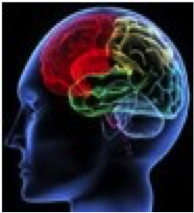 Profiling is a science of observation, study and exploitation of traces of a crime scene, a person, or an animal to determine the relevance of such traces to an investigated crime, event or personality and behavior in general.
Profiling is a science of observation, study and exploitation of traces of a crime scene, a person, or an animal to determine the relevance of such traces to an investigated crime, event or personality and behavior in general.
Anthropological and Psychological profiling

Profiling consists of several major types:
Cultural profiling
Racial profiling
Predictive profiling
Forensic information technology
Drug profiling
Offender profiling
Digital image forensic
DNA profiling
Performance profiling
The information obtained from profiling is known as forensic, such information is widely relied upon by judiciary systems, such as courts, and police enforcement agencies to determine what happens in a crime scene and help in assumption of criminal behavior.
However, such information is not restricted to the use of such bodies, but rather extends to assisting observers to broaden the comprehension of studied cases or individuals when applied by intelligence agencies or any security related bodies.
Profiling and forensic profiling is used in all fields of studies and not only humans, in fact, this science is developing and advancing very rapidly despite scientific criticism to its viable application.
Generally, forensic profiling refers to the profiling practices of discovering the correlation between acquired data related to studied subject or case as an identifying process and a categorization of groups and data acquired, such as nominal data (persons or objects and their relation due to an investigation) and crime data which is physical tracks of criminal activities on crime scenes be it a witness, a laptop or a mobile phone.
The most commonly used profiling techniques are data mining techniques, such as generating profiles based upon discovered data and the relevance of its patterns.
The four phases of profiling (Gregg O McCrary):
– Antecedent: The murderer’s plan, fantasy and drive prior to committing the crime.
– Method and manner: type of selected victims and method used to commit the crime.
– Body disposal: If the murder and the body disposal took place at one or, multiple scenes.
– Post offense behavior: if the murderer tries to publicize himself by reaching the media or contacting investigators.
Profiling is based on common sense, yet its applied measures varies from culture to culture and race to race, it is an advanced investigative tool while its effectiveness is still under a lot of scientific scrutiny since it is mostly a speculative art still. An Indian would shake his head from left to right in an affirmative gesture or expression, while a Caucasian by doing so would indicate to a denial gesture or expression, an owl in the Middle East is looked upon as a bad omen, while in the west it symbolizes wisdom, and so on.
Profiling relates behavioral science and relies on observation and analysis.



It is accepted that the evolution of human racial and physical features generates from their inherited behavior due to a specific environment and way of adaptation. Lets take for instance an African negroid thick lips evolved due to an adapting process to help preserve moisture, an aborigine of Australia or Papua New Guinea developed thick eye browse to protect his eyes from sun rays, a Bedouin desert folk did so with a larger or longer nose to help him breath better in desert climate, and women living in hot and humid terrains tend to have a larger buttocks to preserve body fat etc…
Therefore; profiling relies heavily on the understanding of the subject cultural and ethnical background, and that in itself is based upon relative measures and speculations.
Though profiling is regarded to be a part of science, yet a successful profiler needs to be very talented if he is to produce an effective and accurate profiling.


Profiling goes back in history to the middle ages, and Scotland Yard took it a step further, while Sherlock Holmes character made it even more popular, then there is the CSI series of late filling the rest of the empty cup of the thirsty TV shows viewers.
Remember; we apply our own spontaneous profiling in daily life by what we interpret and perceive from the body language that we use from one another.
Till the next article, may you have the best personality profile!
Adam El Masri






